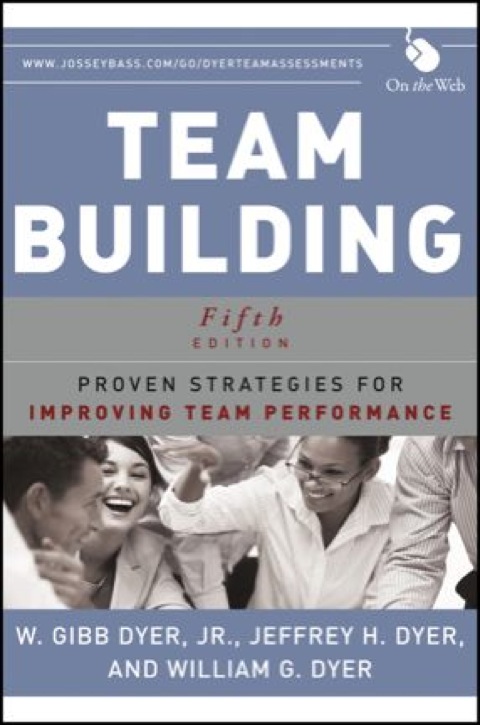Description
Efnisyfirlit
- Title page
- Copyright page
- Contents
- About the Online Assessments
- Dedication
- Introduction
- Part One: The Four Cs of Team Development
- 1: The Search for the High-Performing Team
- Determinants of High-Performing Teams: The Four Cs
- Context for the Team
- Composition of the Team
- Competencies of the Team
- Change Management Skills of the Team
- What Happened to John Smith?
- 2: Context
- The Context Problem: Why Teamwork Often Doesn’t Work
- The Importance of Context
- How Important Is Effective Teamwork to Accomplishing This Particular Task?
- What Type of Team Is Needed?
- Does the Organization’s Context of Culture, Structure, and Systems Support Teamwork?
- 3: Composition
- Team Composition and Performance
- Team Size
- Effective Team Context and Composition: The Case of Bain & Company
- Cultural Characteristics: A Team Orientation
- Promoting Team Leadership Skills
- Team Process Emphasizing Interdependency and Productivity
- Team Dynamics and Structure: Lean, Flat Teams with High Responsibility
- Attention to Team Chemistry
- High Priority on Personal Development
- Monthly Measurement of Team Satisfaction and Performance
- Assessing Context and Composition
- Creating the Context and Composition for Team Performance
- Provide Clear Top Management Support for Team Development
- Create Organizational Rewards to Support Teamwork
- Make Time Available for Team Development
- Regularly Assess Whether the Organization’s Culture, Structure, and Systems Support Teamwork
- Develop a Systematic Process for Making Team Assignments
- 4: Competencies
- Developing the Competencies of High-Performing Teams
- The Shift from Management to Team Leadership
- Team Leader as Educator
- Sharing Power
- Sharing Leadership
- Developing the Competencies of an Effective Team
- Developing Team Guidelines and Metrics
- Developing Team Competencies
- Team Leader as Coach
- Team Leader as Facilitator
- Measurement of Team Competencies
- Creating a High-Performing Team at the Wilson Corporation
- 5: Change
- Common Problems Found in Teams
- Differences Between Team Members and the Team Leader
- Differences Among Team Members
- Team Building as a Process
- Use of an Outside Facilitator or Consultant
- The Roles of Manager and Consultant
- The Team-Building Cycle
- Problem Identification
- Data Gathering
- Diagnosis and Analysis of Data
- Action Planning
- Implementation and Evaluation
- 6: Bringing the Four Cs Together
- Preparation
- Goals
- Alternative Actions
- Creating an Open Climate for Data Gathering
- Goals
- Alternative Approaches to Data Gathering
- Group Data Analysis and Problem Solving
- Goals
- Alternatives for Data Analysis
- Problem-Solving Process
- The Appreciative Inquiry Approach to Team Building
- Using Feedback to Improve Team Performance
- Goals
- Types of Feedback
- Action Planning
- Goals
- Options for Action Planning
- Implementation, Evaluation, and Follow-up
- Follow-up Team Sessions
- Part Two: Solving Specific Problems Through Team Building
- 7: Managing Conflict in the Team
- Expectation Theory of Conflict
- Negotiating Agreements
- Helping Teams in Conflict or Confusion: The Role Clarification Exercise
- Planning
- Meeting Design
- Role Clarification
- The Start-Stop-Continue Exercise
- The Manager as the Center of Conflict
- Diversity as the Source of Conflict
- The Problem Member
- 8: Overcoming Unhealthy Agreement
- Unhealthy Agreement
- Symptoms of the Problem
- Symptoms More Easily Observable to Outsiders
- Symptoms More Easily Observable to Insiders
- Team Building Around the Crisis of Agreement
- Format Possibilities for Agreement-Management Team-Building Sessions
- Data Collection by a Consultant
- Data Collection by Members of the Team
- Sharing the Theory and Taking Action
- 9: Reducing Conflict Between Teams
- Diagnosing the Problem
- Designing the Solution
- Choosing an Appropriate Model
- Follow-Up
- Case Studies of Interteam Conflict Resolution
- Case One: ElectriGov
- Case Two: ExactCorp
- 10: Leading Innovative Teams
- Who Are You as a Leader?
- Develop Your Discovery Skills
- Create a Safe Space for Others to Innovate
- Build a Team with Complementary Skills and Expertise
- Complementary Innovation and Execution Skills
- Complementary Human, Technical, and Business Expertise
- Use Team Processes That Encourage Innovation
- Process 1: Questioning
- Process 2: Observing
- Process 3: Networking
- Process 4: Brainstorming Solutions and Associating: The Deep Dive
- Process 5: Prototyping (Experimenting)
- Part Three: Team Building in Different Types of Teams
- 11: Managing the Temporary Team
- Preliminary Conditions for Temporary Teams
- Design for a Temporary Team
- Step 1: Developing a Realistic Priority Level
- Step 2: Sharing Expectations
- Step 3: Clarifying Goals
- Step 4: Formulating Operating Guidelines
- 12: Creating Effective Cross-Cultural Teams
- What Is Culture?
- Cultural Artifacts
- Cultural Norms
- Cultural Values
- Shared Assumptions
- Using the Four Cs in Cross-Cultural Teams
- Context
- Composition
- Competencies
- Change
- How to Manage Violated Expectations in Cross-Cultural Teams
- 13: High-Performing Virtual Teams
- How Virtual Teams Differ from Traditional Teams
- Common Problems in Virtual Teams
- Lack of Training and Effective Use of Communication Technologies
- Lack of Effective Team Leadership
- Team Building in Virtual Teams
- 14: Managing Interorganizational Alliance Teams
- How Alliance Teams Differ from Internal Teams
- Organization Culture Clashes
- Lack of Trust
- Shared Decision Making
- Team Size and Expertise Duplication
- Managing Alliance Teams: Lessons from Eli Lilly and Company
- Cultural Assessment: The Due Diligence Team
- Strategic Futures Exercise
- Strategic Decision-Making Template
- Communication and Work Planning Documents
- Keeping the Alliance Team on Track: Annual Health Check
- Part Four: The Challenge of Team Building for the Future
- 15: Challenges for Building Effective Teams
- Implementing the Four Cs: The Key to Success
- Challenges Facing Organizations of the Future
- Finding and Developing Employees with Team Skills
- Teams Without Clear Boundaries
- Globalization and Teamwork
- Conclusion
- Notes
- The Authors
- Index






Reviews
There are no reviews yet.